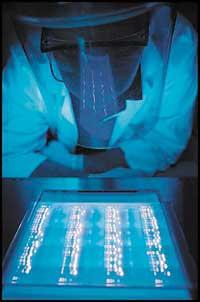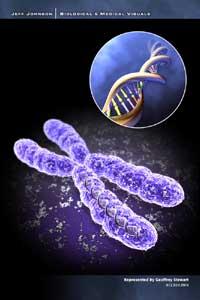Can we change genes?
2001/05/25 Roa Zubia, Guillermo - Elhuyar Zientzia
Scientists have made a great effort to read the human genome. The truth is that it is a laborious work, since we have to collect and order millions of data. In this data there is information about proteins and it can be very useful to have your database finished.
The genome will bring great advances in medicine. Many diseases have to be caused by proteins. When a protein is poorly synthesized, it cannot start its work, and this may be because there is some modified data in the gene. Sometimes, in addition, one protein or another is not synthesized because in the genome there are opposite signals. Therefore, biochemists are looking for solutions to gene mutations. This is called gene therapy.

They are major problems in gene therapy. As the entire genome is in all cells, in all or at least in all cells of an organ repairs must be made. Viruses in nature do so, so scientists have started using artificially modified viruses.
In the laboratory, the virus removes the original DNA and introduces a ‘healthy’ gene to be repaired. Subsequently, the patient is infected with this artificial virus that mixes the gene with the genetic information of the cells. Thus, the cell contains twice this gene, defective and repaired. While it is easy to describe this process, doing it successfully poses a major challenge for biochemistry experts. However, the situation that is achieved also raises some problems.
There are two copies of the gene but what needs to be activated is a good copy. The original defective copy is the only one found in the place that is assigned to it naturally. In addition, the interposition of an external gene may involve the division of another existing one, since the virus does not want to preserve the health of the polluting cell.
New York Cornell University biochemists investigate how to overcome these problems. Human cells have managed to change the gene of a highly studied protein, but the change has been of a single mutation and in a specific place of the genome.
The success of this technique is a breakthrough for medicine, especially in the field of genetic diseases.

Gai honi buruzko eduki gehiago
Elhuyarrek garatutako teknologia





